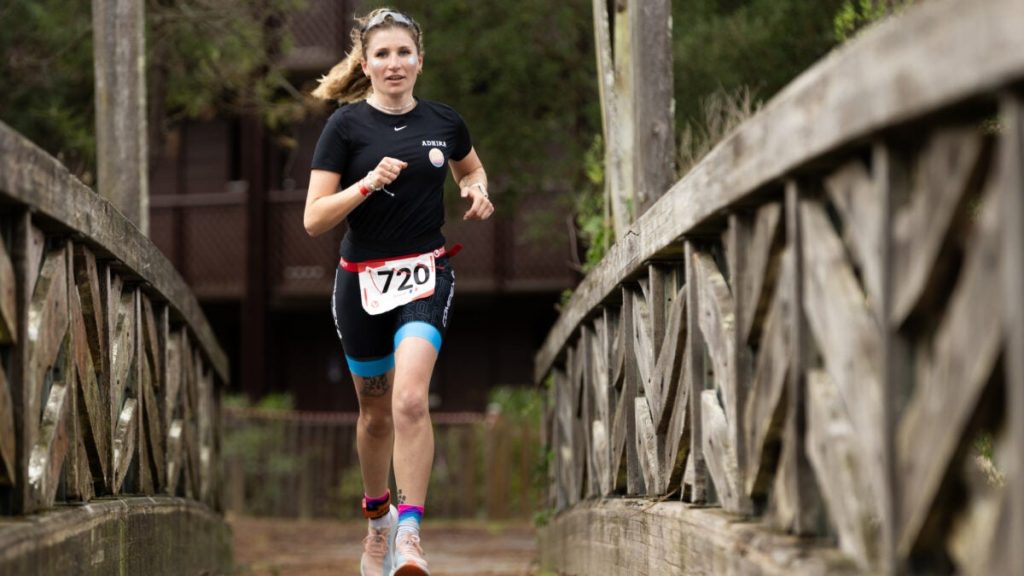This Type of Running Shoe Is Most Likely to Injure You – Triathlete

FESTIVAL PERKS WITH OUTSIDE+
Don’t miss Khruangbin, Lord Huron, and more at the Outside Festival.
GET TICKETS NOW
MUSIC ANNOUNCED!
Khruangbin and Lord Huron to headline 2025 Outside Festival.
BUY TICKETS
Powered by OutsideBe one of the first to try our new activity feed! Tap “Home” to explore.A new study found that wearing shoes with a high heal-to-toe drop could lead to more running-related injuries. Photo: Challenge Family
New perk! Get after it with local recommendations just for you. Discover nearby events, routes out your door, and hidden gems when you
sign up for the Local Running Drop.
In triathlon training, consistency is king. But what if that consistency was a culprit in your latest injury? As all too many of us know, running-related injuries like IT band syndrome, shin splints, and stress fractures often present themselves at the worst times and have been the bane of many great race preparations.Consistent, repetitive motion with improper running form often causes these injuries. But according to new research out of the University of Florida, you probably don’t even know your form could use a tune-up – and your shoes might be the reason why.The study, published in the journal Frontiers in Sports and Active Living, consisted of 710 runners from various backgrounds. After asking each runner if they were a heel striker, non-heel striker (mid-foot or forefoot strike) or they “didn’t know,” the researchers examined each runner’s gait with a high-tech slow-mo motion capture system and analyzed their past running injuries.The results were abundantly clear. Those runners who “didn’t know” their gait pattern had, by far, the greatest likelihood of sustaining a running-related injury.The main contributing factor to runners not knowing their foot strike, or how their feet were hitting the ground, was the heel-to-toe drop of their training shoes. A higher drop, as well as higher shoe weight, led to less accurate body awareness and a higher likelihood of injury.Additionally, those runners who changed their shoe type in the past six months were more likely to sustain a running-related injury.So if shoes are part of the problem, is the solution simply changing them out? Yes and no. Let’s look at the takeaways and how can you apply them to reduce your risk of injury.As the study highlights, a shoes with high heel-to-toe drop and greater weight contribute to less awareness of foot strike. Opting for a shoe that has a lower drop and weight is an effective way to become more engaged (literally) with the ground and how your foot is interacting at the impact, loading, and takeoff stages of your run gait. A healthy foot will feel the ground, fully load, then utilize its “free” stored energy to push you forward.A more minimalistic shoe will let the foot function as it should. Further, a large heel-to-toe drop alters how the force of impact is distributed throughout the body. As shown in a recent study on the effect of shoe drop on joint stress, a higher-drop results in much larger stress at the patellofemoral (knee) joint. Opting for a lower-drop shoe allows the body to distribute stress as it was designed to do, reducing excessive loading to individual joints.Opting for trainers with a mild drop (4-6mm) and not too much “clunk” could be an easy way to become more aware of how you’re running and stay injury-free.If you’ve been running in a high heel-toe drop shoe and dealing with injury, it might be worth trying a different shoe. Just remember, as with any change, to progress gradually into your new shoes to allow the body time to adapt. Start with one to two runs per week, and slowly progress over four to five weeks until you can wear your new shoes full time.Yes, the type of shoes you wear can be a culprit in running-related injury, especially if they blunt the signals your body needs for good running form. This study clearly shows that enhanced body awareness while running, particularly when it comes to foot strike, leads to lowered injury risk.Becoming more cognizant of how your body is moving and how your foot interacts with the ground is a free way to decrease your risk of injury. Yes, it’s nice to listen to music or zone out with a podcast during a long run. However, it’s likely worth it to zone in to the task at hand now and then to ensure you’re moving well.One helpful tip is to run in front of a mirror on a treadmill so you can watch yourself run in real time. It’s easy to adopt poor running mechanics without realizing it, especially when fatigue sets in. Unlike the friendly spectator yelling, “Looking good!” at mile 23 of the marathon, the mirror doesn’t lie.The best part about working on your running form is that it will help you develop movement patterns that make you stronger instead of more likely to get injured. More importantly, it might even help you actually look good at mile 23!We take a quick flyby video tour of the 2024 Ironman World Championship Kona course.
Join Outside+ to get access to exclusive content, 1,000s of training plans, and more.
Source: https://www.triathlete.com/culture/news/shoes-with-high-heel-to-toe-drop-tied-to-more-injuries/






